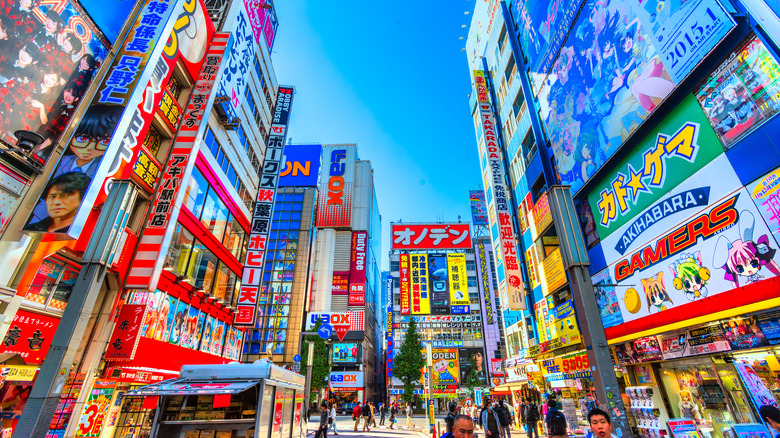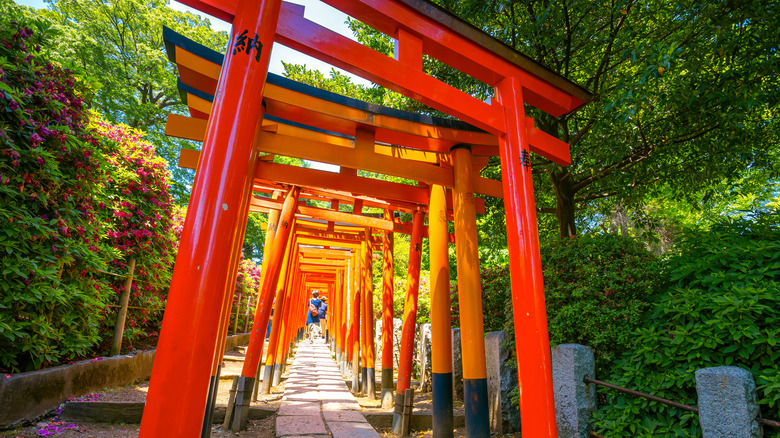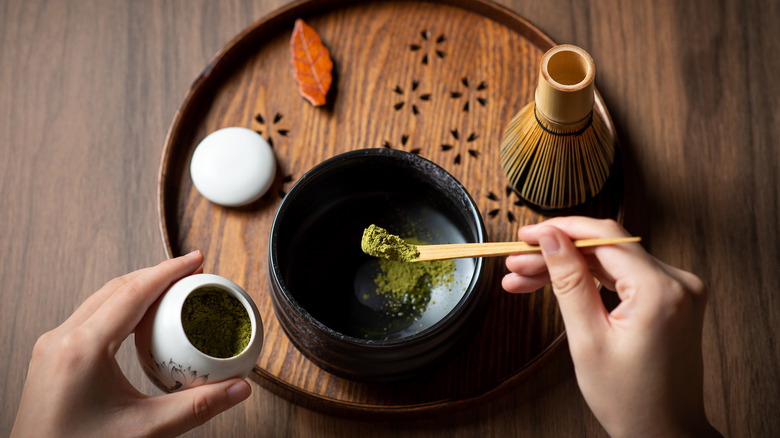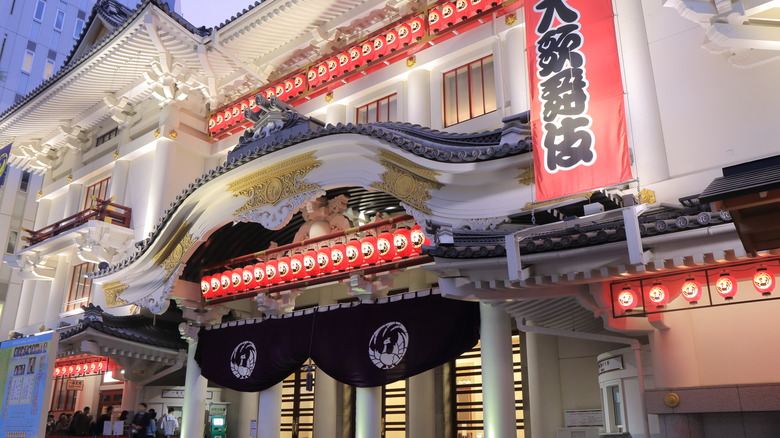17 Best Things To Do In Tokyo For First-Time Visitors, According To Travelers
We may receive a commission on purchases made from links.
It's no surprise that there is an extensive list of tempting things to do in Tokyo for first-time visitors with such a vast wealth of space and culture to explore in the city. It's the largest metropolitan city on the planet with a population of 37.3 million and one of the world's biggest urban cities according to land area.
Tokyo, the capital city of Japan, is a city of contrasts. There are opportunities to dive into the local culture at historic temples and century-old markets, along with the chance to feel like you're living in the future with cutting-edge art exhibitions, neighborhoods dedicated to video gaming and anime, and even Japan's version of Disneyland.
With only a few days to a week in the city, visitors must properly narrow all the possible options to only the very best things to do in Tokyo. Luckily, your search is over. We figured out the best things to do in Tokyo for first-time visitors by tirelessly combing through reviews and Japanese blogs to reveal the city's gems.
Senso-ji Temple
Sensō-ji Temple is famed for being the oldest Buddhist temple in Tokyo, dating back to 628. The story goes that over a thousand years ago, a pair of brothers kept inexplicably fishing a statue of the goddess of mercy out of the nearby Sumida River. The temple was later built in the area to honor that deity officially.
The five-story pagoda's historic esteem and beauty draw in around 30 million visitors to Sensō-ji annually. The colorful, red architecture of Sensō-ji Temple is also a calling card for photographers in Japan. Multiple events are held at Sensō-ji Temple throughout the year, including the Sanja Matsuri Festival and Asakusa Samba Carnival. You can check out the list of annual events on the Sensō-ji Temple website.
The temple is also right next to Nakamise Shopping Street in the Asakusa neighborhood. It's one of the city's best places to buy souvenirs and grab snacks. The temple and shopping street are good stops for first-time visitors after landing at the Tokyo International Airport because they provide a solid introduction to the city.
Tokyo Skytree
The Tokyo Skytree is a broadcasting tower that also happens to be the best spot for first-time visitors to access panoramic views of the city. You'll likely spot the Skytree as soon as you touch down in Tokyo because it's by far the highest structure in the city. At 2,080 feet tall, it is the tallest free-standing tower in the world, according to the Guinness Book of World Records. It features two different observation decks at varying heights to appreciate the lofty perspective over Tokyo.
The first is called the 1,150-foot-high Tembo Deck, and it has a glass floor to really illustrate to visitors just how high they are inside the Skytree. The second viewpoint is called Tembo Gallery at 1,500 feet high and it enables you to see as far as 43 miles in the distance in every direction. Inside the base of the Skytree, there are tons of shops, restaurants, and even a planetarium and aquarium.
Shibuya
Shibuya is one of the most iconic and busiest areas in all of Tokyo. This Tokyo ward is huge and encompasses popular neighborhoods like Harajuku and Ebisu. It's one of the best places to go for entertainment and nightlife. To get an authentic feel for the organized chaos of Tokyo, first-timers in the city must make an obligatory pilgrimage to Shibuya Crossing.
The Shibuya Crossing is one of the most famous spots in Tokyo, with hectic crowds of approximately 2 to 3 million people passing through the area every single day. First-timers should move with the herd through the crossing, then head up to Mag's Park Rooftop to snap a photo over the chaotic street.
After the crossing, there is plenty of other stuff to do in Shibuya. During the day, go shopping at boutique stores, one of the must-do things in Harajuku. In the evening, check out the local nightlife scene at popular teenie Shibuya bars like Tasuichi.
Tsukiji Outer Fish Market
The early-morning Tsukiji Outer Market has specialized in providing fresh fish to Tokyo for nearly a century. The market is a few blocks long, and strolling through the aisles gives first-time visitors in Tokyo a crash course in Japan's famous food scene. While it is a wholesale market that first gained notoriety for its morning tuna auction, there is plenty of food around for tourists to try on the spot. It's one of the best places to taste raw fish in the form of sushi, sashimi, or kaisendon.
A few of the most famous dishes and stalls to try while walking around Tsukiji Market include the tamagoyaki from Daisada, kaisendon from Tsukiji Koromo Sushi, and onigiri from Marutoyo. One of the easiest ways to explore everything the market has to offer is by joining a tour with a local guide. For example, this half-day tour will take you around Tsukiji Fish Market and the Asakusa neighborhood with food samples.
Shopping in Harajuku and Akihabara
Shopping or even just browsing the stores in Tokyo is a must. Two of the best spots for the activity are Harajuku and Akihabara. The shopping scenes in these Tokyo districts are very different, but each one reflects a unique facet of Japanese culture that first-time visitors to the city are typically searching for.
Harajuku is located next to Shibuya Station, and it's a hub for the one-of-a-kind, head-turning street fashion scene that emerged from Tokyo. Along Takeshita Street in this district are countless boutique shops, clothing stores, and places to eat. Alternatively, you can wander around Omotesando Hills Mall to do some indoor shopping in Harajuku.
Akihabara, also known as Electric Town, is a solid spot to visit in Tokyo for gaming products, electronics, and anime shopping. Simply walking around the neon-drenched Tokyo neighborhood is enough to entertain any bright-eyed traveler. The stores in Akihabara range from entertaining to odd, with establishments completely made up of toy vending machines and one of the largest Don Quijote stores in Japan.
Ueno Park
Ueno Park is one of Tokyo's many enormous green spaces and has 133 acres of area to discover. It was opened 150 years ago, making Ueno the very first city park in Tokyo and one of the oldest public parks in all of Japan. It is a particularly good stop for first-time visitors in Tokyo because there are several cultural attractions of the city located within its bounds.
Firstly, six of Tokyo's top museums are inside Ueno Park, including the Tokyo National Museum, the Tokyo Metropolitan Art Museum, the National Museum of Nature and Science, and the National Museum of Western Art. The Ueno Park and Zoo are fun stops in the park for families with kids. Finally, there are several temples and shrines inside Ueno Park, such as Shinobazunoike Benten-do, Ueno Toshogu Shrine, and Kiyomizu Kannon-dō Temple.
Ueno Park is also famed for its bloom during the cherry blossom season in Japan, which lasts approximately two weeks in early spring. Around 1,200 cherry trees are planted inside Ueno. During this time of year, the park attracts over 2 million visitors hoping to relax in the romantic scenery and take photos.
Shinjuku Gyoen National Garden
The sprawling 144 acres of Shinjuku Gyoen National Garden are located in the heart of Tokyo and are home to around 10,000 trees. It was originally constructed for the imperial family in Japan but was later transformed into a public park. The late 19th-century garden is a lush green escape right in the middle of the city's busiest neighborhoods, perfect for people who need a break from the Tokyo crowds.
Shinjuku Gyoen National Garden is made up of three distinct variations of gardens — Japanese traditional, landscaping, and formal. No matter what time of year you visit Tokyo, the garden is a must-see, but it's 100% necessary if you're in the city during the spring season from March to May. In the springtime, approximately 900 cherry trees cover the entire garden in varying shades of pink, and it's one of the best places to take in the beauty of Japan's legendary cherry blossom season.
The Imperial Palace
The Imperial Palace in the Chiyoda ward is a key piece of Tokyo's history. The palace was initially built in 1457 and has since served as the Japanese Emperor's residence. The palace is surrounded by three pristine gardens; the East Gardens, Kokyo Gaien National Garden, and Kitanomaru Park. Each of the gardens has its own benefits. For example, in Kitanomaru Park, you can rent a boat to take out on the moat near the palace from April to November.
While visitors aren't permitted in certain parts of the site due to its high-profile nature, they are allowed to wander some of the palace's parks and gardens. It's even totally free to walk around these areas, so it's a great place to visit in Tokyo for budget travelers. The best time of year to visit the Imperial Palace is fall or spring when the flowers are in bloom, or the leaves are changing colors.
teamLab Planets
Teamlab Planets is a fully immersive digital art museum in Tokyo that makes visitors feel like they're stepping into an alternate universe. Teamlab Planets engages all of your senses in a mind-bending way as you explore the four enormous exhibition rooms and two gardens. It's a captivating activity showing first-time visitors the depths of the city's creativity, and you'll definitely want to have your camera handy.
The goal of these exhibits is to make visitors feel indistinguishable from the works around them. At the beginning, visitors take their shoes off, as several of the art installations include a significant water element. Throughout the journey, you wade your way through ankle-deep pools as projected light shows play around you, enter a mirrored room filled with colorful orchards that playfully move around you, and go through other types of otherwordly spaces that are difficult to fully embody in words alone. Many people spend hours stuck in these rooms because of the incredible details of each space.
Memory Lane
Memory Lane is the nickname for a teenie alleyway in the Shinjuku neighborhood lined with places to try authentic Japanese street food. It's located right near the Shinjuku Station's east exit, so it's very easy to reach this hotspot from pretty much anywhere else in the city.
The best time to visit Memory Lane, also known as Omoide Yokocho, is in the evening. This area is more of a night-time hangout, and you probably won't find as much activity during the day. It's a common after-work hangout for locals because the food and drinks are quite affordable.
Memory Lane is distinctly cozier than most of the busy, ultra-modern metropolis that is Tokyo. So, it's a good spot for going out on a date or just getting a more authentic feel for traditional local culture. Walking down the street, you'll pass by dozens of vendors selling things like yakitori, BBQ, and noodles.
Nezu Shrine
Most visitors are familiar with the famous red gates in Kyoto, but there is also a smaller version of this Japanese attraction in Tokyo called the Nezu Shrine. Nezu Shrine was constructed in 1705, making it one of Tokyo's oldest Shinto shrines. It was designed to resemble the Toshogu Shrine in Nikko, and it is also considered to be one of the most aesthetically pleasing shrines in the city by many people because it is surrounded by gardens and fish-filled ponds.
The best time to visit the Nezu Shrine is the month of April because this is when the annual Azalea Spring Festival is held. During this time, 50 different species of azalea flowers burst into full, colorful bloom, which gives the shrine a particularly charming atmosphere. However, no matter the time of year, the Nezu Shrine is a lovely experience and a must-do for first-time visitors in Tokyo.
Japanese Tea Ceremony
Attending a Japanese tea ceremony is a fun and engaging way for first-time visitors in Tokyo to dive into the local culture. The practice was initially introduced in the eighth century as a medicine for the rich but eventually became a country-wide activity. Tea ceremonies can last anywhere from 45 minutes to a few hours and involve a mix of entertaining your tastebuds and learning about Japanese history.
During the ceremony, guests will watch their host go through the process of preparing the tea before enjoying a sweet snack. Once it's complete, the drink will be served in a tea bowl. The processes between individual teahouses can vary slightly, but in general, this is what visitors can expect.
There are a few different places to go and try out a traditional Japanese Tea Ceremony in Tokyo. For example, the tea ceremony at Maikoya in Tokyo is amazing. Maikoya has won the Tripadvisor Traveler's Award five years in a row, and the experience includes an English-speaking guide who will walk you through the history and proper protocol before the magic begins.
Ryogoku Kokugikan
Sumo wrestling is a major athletic staple in Japan and has even been called the country's national sport. That's why going to a sumo wrestling event at Ryōgoku Kokugikan sports arena is a must for a first-time visit to Tokyo. Ryōgoku Kokugikan was the world's first sumo wrestling stadium, with roots dating back over 100 years, but the current building was opened to the public in 1985. The stadium can fit up to 10,000 people, so expect lots of energy at these sporting events.
There are three national sumo tournaments held at Ryōgoku Kokugikan throughout the year, which take place in January, May, and September. Each season is around two weeks long, with several matches throughout this time period. There is a fairly good chance of being in Tokyo for a match around these months. You can check out the upcoming schedule for sumo wrestling events on the Ryogoku Kokugikan website.
Tokyo Disney Resort
Tokyo Disney Resort is Japan's version of the iconic Disney theme park. It was opened in the 1980s as the very first Disney theme park outside of the United States and has since worked its way up to being one of the most popular amusement parks in the world. At the time of writing, Tokyo Disney Resort is the third most-visited theme park on the planet, with over a million visitors monthly visitors. Of course, this place is a big hit with families visiting Tokyo, but it can also be an entertaining afternoon for adults.
The Tokyo Disney Resort comprises two major theme parks — Tokyo Disneyland and Tokyo DisneySea. Tokyo Disneyland is modeled after California's park with a slight Japanese twist on the food and attractions. Here, you'll find Disney-themed culinary delicacies like stormtrooper mochi, melon bread, and sparkling berry and cream cheese tapioca tea.
On the other hand, DisneySea is unlike any other Disney park on the planet (literally) because it's the only one of its kind. As the name suggests, DisneySea is devised around ocean legends, and it features themed areas like a futuristic marina called Port Discovery and Lost River Delta, modeled after the ruins of an ancient civilization.
Rainbow Bridge
The Rainbow Bridge is a key element of Tokyo's skyline and a landmark of the city. Visitors can use this bridge to cross from mainland Tokyo to an artificial island called Odaiba. One of the reasons that this suspension bridge has become such an iconic site in Tokyo is that every night, it goes aglow with colorful solar-powered lights that are usually green, pink, and white. However, the bridge's lights turn rainbow during special events, hence the nickname.
It's possible to go across the bridge by car or on foot to reach Odaiba. It takes approximately 30 minutes to walk across the Rainbow Bridge. The footbridge closes at 9 p.m. in the summer and 6 p.m. in the winter. Walking along the bridge, you'll be able to spot other well-known Tokyo sites, such as Tokyo Tower. When the weather is sunny, you may even be able to see all the way out to Mount Fuji.
Kabuki-za
Kabuki is a traditional expression of Japanese theater that has been enjoyed since the 17th century. The art form is distinguished by its use of eye-catching, elaborate costumes and dramatic performances. Watching a kabuki show is an excellent way for first-timers (and frequent visitors) in Tokyo to spend an evening.
One of the best places to experience this style of performance is at Kabuki-za in the Ginza neighborhood of Tokyo. This traditional kabuki theater has been putting on performances since 1889. It's not just the show itself that's incredible at Kabuki-za; it's also the architecture of the theater itself.
The layout of the theater is designed to ensure that every one of the 2,000 seats has a clear view of the stage. The theater is also very tourist-friendly, with helpful staff. Whether it is your first time in Tokyo or you are a veteran of the city, a night at a kabuki show is a fabulous experience.
Gotoku-ji Temple
Any travelers in Japan who need a little extra luck on their side should pay a visit to the Gōtoku-ji Temple, located around 30 to 40 minutes away from the city center of Tokyo. At Gōtoku-ji Temple, you'll be surrounded by thousands of those inexplicably wise white cat statues. According to legend, there will also be a lot of luck in the air.
The story goes that a lord was coaxed into a temple by a cat waving their paw at him just before a thunderstorm, and he took the furry friend as a sign of good fortune. In 1633, the Gōtoku-ji Temple was constructed in honor of the lucky cat to hopefully tether its power to the location. To this day, people go there to pray for good fortune in their lives.
This particular Tokyo attraction is a bit removed from the city's other main attractions. However, it's still not too tricky to reach Gōtoku-ji Temple. The temple is open from 6 a.m. to 6 p.m. and can be reached via public transportation by taking the Odakyū line from Shinjuku Station.
Methodology
The rankings in this article were concluded based on in-depth research into the most visited, popular, and unique tourist attractions in Tokyo, Japan. Several aspects were considered in deciding which attractions would make the list, including the number of visitors per year, the historic and cultural significance, and the overall entertainment value for visitors.
First, we determined the best things to do in Tokyo by browsing current blogs about Japan and online travel forums to find contending options. Then, we dug deeper into these highlighted activities by reading reviews from authentic, recent visitors to determine which attractions actually lived up to the hype. Finally, we collected the most iconic and most-loved things to do in Tokyo onto this list.


















